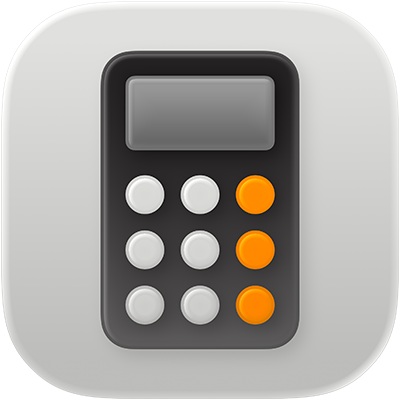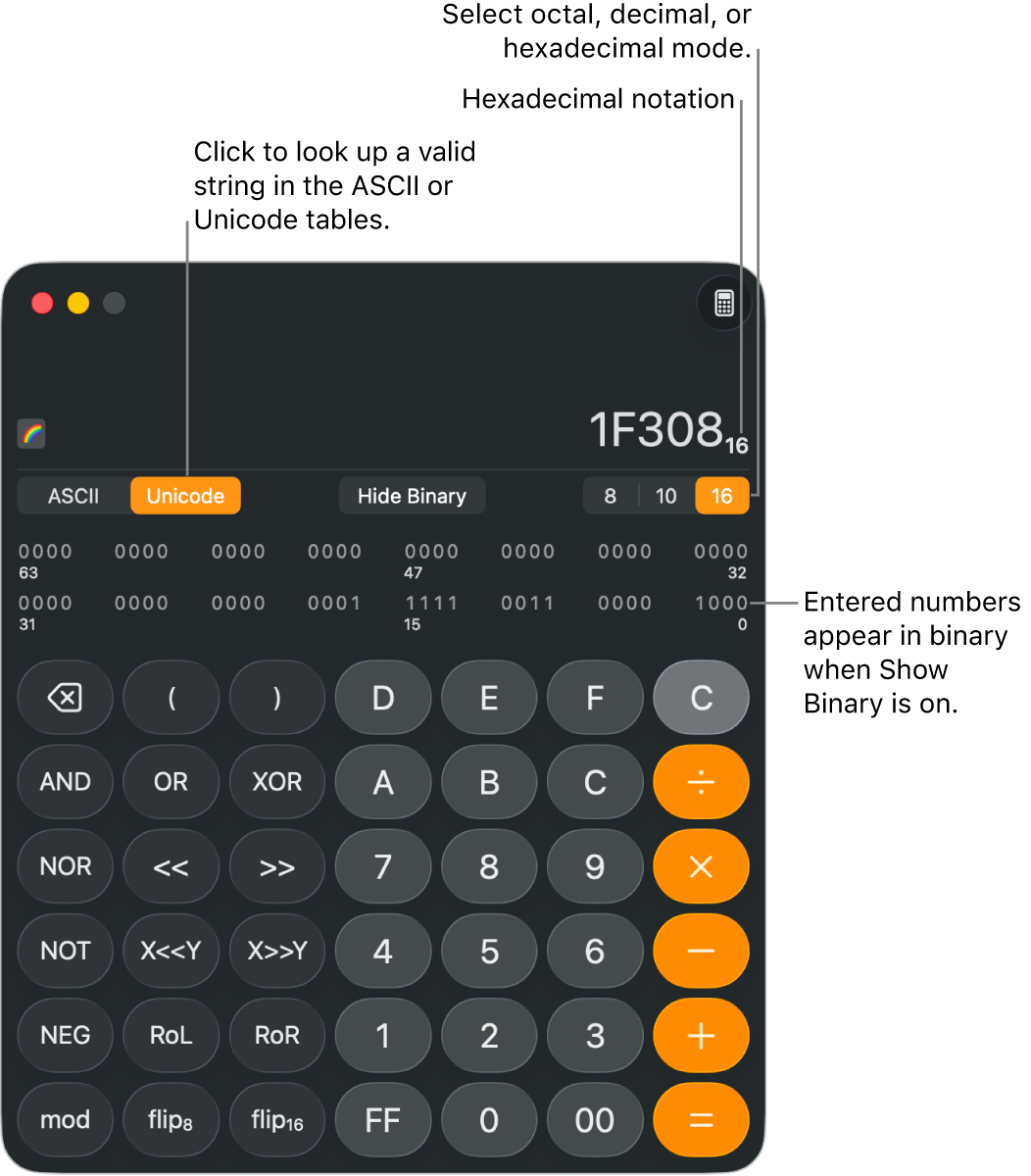
Use the programmer calculator on Mac
You can perform binary, octal, decimal, hexadecimal, and bitwise calculations using the programmer calculator. You can also shift bits, rotate bits, flip bytes, and more. The programmer calculator can translate valid values into ASCII and Unicode characters.
Tip: To learn a key’s function, hold the pointer over the key to see its help tag.

Switch to the programmer calculator
Go to the Calculator app
 on your Mac.
on your Mac.Do one of the following:
Choose View > Programmer in the menu bar.
While using the basic or scientific calculator, click
 , then choose Programmer.
, then choose Programmer.Press Command-3.
Switch the base to octal, decimal, or hexadecimal
You can choose to perform calculations in octal (base 8), decimal (base 10), or hexadecimal (base 16).
Go to the Calculator app
 on your Mac.
on your Mac.In the programmer calculator, click a key under the calculator’s display to choose one of the three formats for your entries:
Octal: Click 8.
Decimal: Click 10.
Hexadecimal: Click 16.
Adjust the binary value
Go to the Calculator app
 on your Mac.
on your Mac.Click Show Binary.
Enter a number in octal, decimal, or hexadecimal format, then adjust the number by clicking the 1 and 0 bits in the binary display.
Translate ASCII or Unicode to characters
Go to the Calculator app
 on your Mac.
on your Mac.Click the ASCII or Unicode button.
Enter an ASCII or Unicode identifier. The corresponding character appears in a small box (just above the ASCII button).
You can also clear the display, repeat the last operation, and show commas in large numbers as you do in the basic calculator.
Note: Rather than rounding, the programmer calculator truncates any digits after the decimal point. For example, if you enter “99 ÷ 10 =”, the result is 9. To increase precision, use decimals in the basic or scientific calculator. See Round results or increase precision.